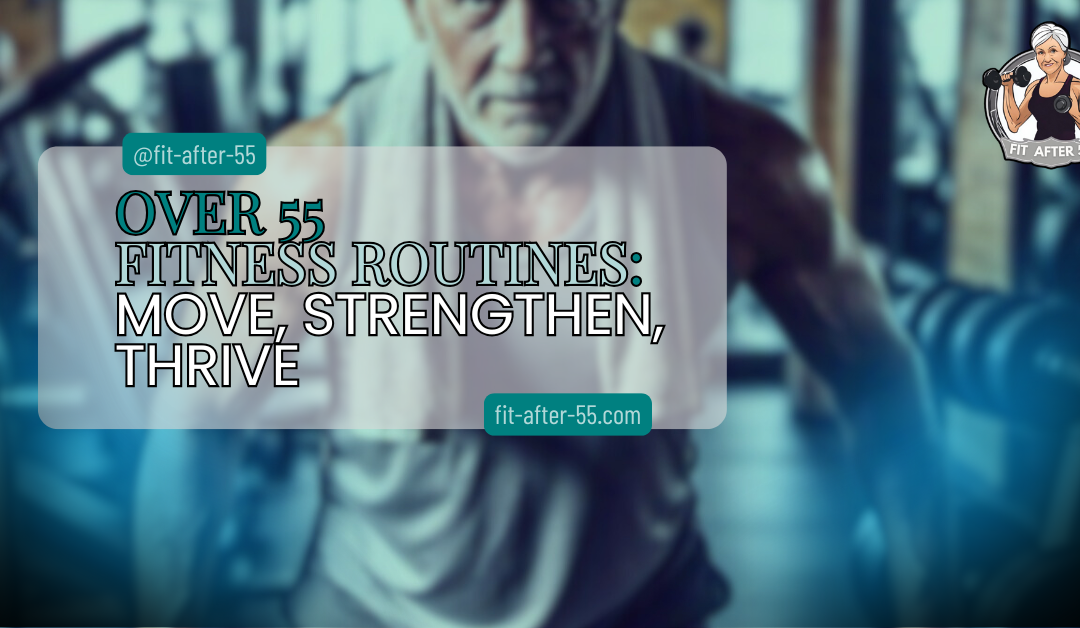Over 55 fitness routines have become something I’ve been thinking about a lot lately. As someone who’s crossed that age milestone, I’m more conscious of my age than I’d like to admit, but I’ve learned that at the end of the day, staying active and prioritizing fitness is what really matters. It’s not about chasing perfection or trying to keep up with the younger crowd—it’s about feeling good in my own body, day by day. If you’re in the same boat, I hope this article will inspire you to take that first step, find what works for you, and keep moving forward. Trust me, it’s never too late to start!
Over 55 Fitness Routines: Simple Moves, Big Benefits
A little secret for you: kicking off a fitness routine in your golden years isn’t just possible, it’s a game changer. Staying active over 55 has proven wonders. Picture better stamina, fewer doctor visits, and an upbeat mood on even the gloomiest days.
You might think about those hero stories—the ones about seniors running marathons or swimming across lakes. But you don’t need to aim for an Olympic medal. The goal here is to prioritize simple, everyday movement that boosts your health and happiness.
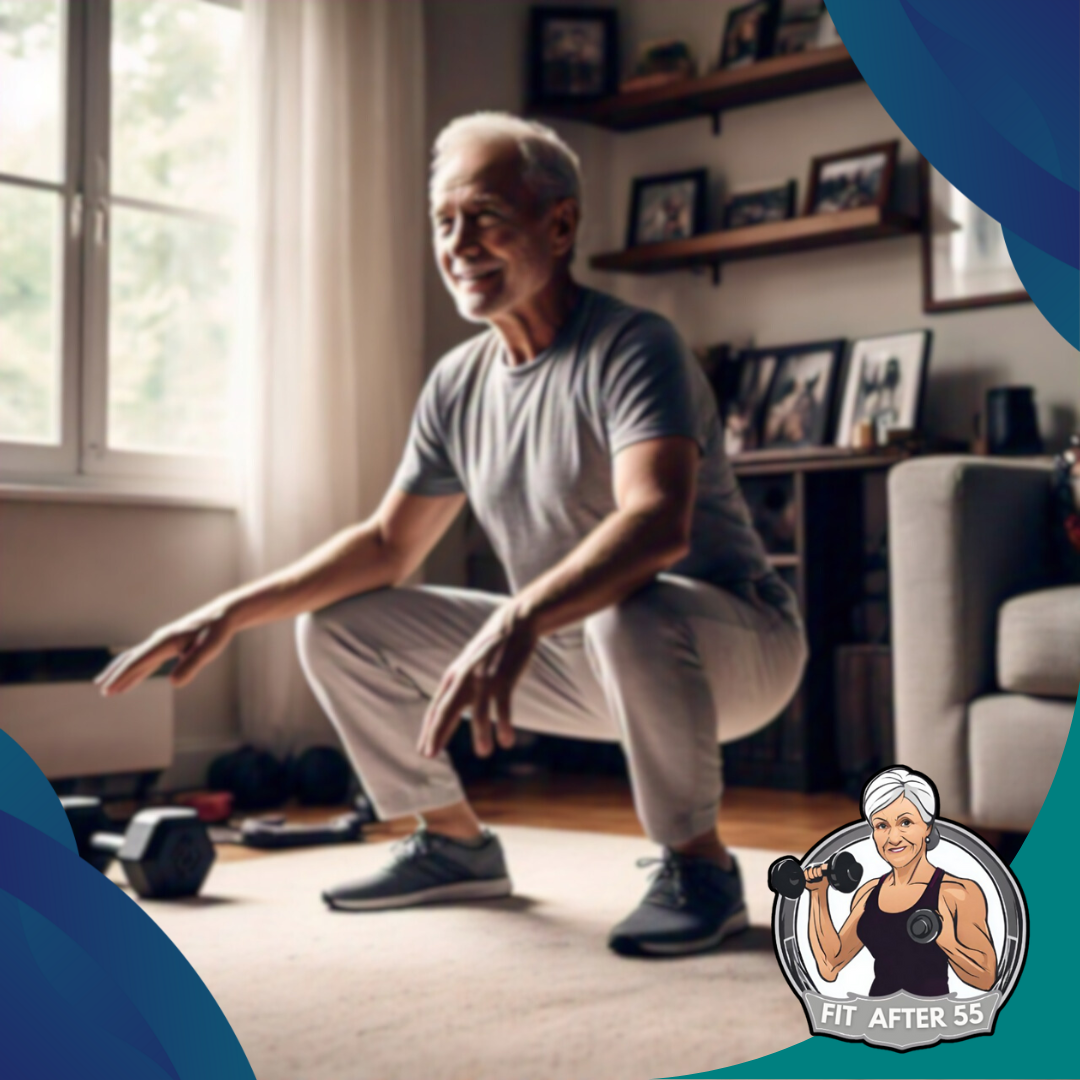
Why does getting fit matter this much? Regular workouts are like magic; they help control weight, improve heart health, and even battle those pesky pains. Not to mention, they can make every day feel a tad brighter. It’s the little things that count, from walking the dog to stretching while catching up on your favorite show.
Take inspiration from people who’ve turned their lives around by embracing fitness later in life. Like Ruth, who at 70, discovered gardening wasn’t just good for her plants—it got her heart rate going and her knees stronger. There’s Peter, who got into cycling at 60, and finds himself with more energy than ever before.
So, remember, it’s all about taking that first step. Whether it’s a walk in the park or a dance in the living room, every little bit helps in this amazing journey called life.
Key Takeaways
- Staying Active Over 55. Fitness isn’t about perfection—simple movement improves health, mood, and stamina.
- Setting Achievable Goals. Use SMART goals to create realistic fitness plans and track progress for long-term success.
- Support & Consistency. Build a support system and stay consistent to maintain motivation and enjoy fitness.
Setting Realistic Goals: Tailoring Fitness to Your Needs
Ever feel overwhelmed figuring out where to start with a fitness routine? It’s all about setting goals that make sense for you. Seriously, it’s crucial to figure out where you stand right now in terms of your fitness. This not only helps you see your starting point, but also gives you a realistic look at where you can go.
Self-Assessment: Know Where You Stand
Begin with a gentle self-assessment. Can you walk a block without feeling out of breath, or is stretching your forte? Maybe you’re comfortable doing chores around the house without huffing and puffing. This honesty lets you set goals that won’t leave you discouraged after a week or two.
Setting SMART Goals
Speaking of goals, make them SMART—Specific, Measurable, Achievable, Relevant, and Time-bound. Instead of saying, ‘I want to get fit,’ try something like, ‘I want to walk briskly three times a week for 20 minutes.’ Such goals are doable and clear, making them easier to stick to.
Using Technology to Your Advantage
Look at tech as your new ally in this journey. There are apps and gadgets galore to help track progress. Whether it’s counting steps, monitoring heart rate, or simply reminding you to move—these tools can be gold. They add a bit of fun to your routine and give little nudges on lazy days.
Celebrating Progress and Staying Motivated
Ultimately, this is your personal journey. Celebrate small wins like walking an extra five minutes or lifting a slightly heavier weight. The key here? Routine, motivation, and a sprinkle of enthusiasm!
Strength Training: Building Muscle and Bone Density
Let’s face it—keeping muscles strong isn’t just for the young guns. It’s for everyone, especially when you’ve hit that fabulous 55-and-more milestone. It’s about staying independent and doing the day-to-day stuff with ease. Research shows that regular strength training can seriously benefit seniors by boosting muscle mass and bone density, which can really make a difference.
Real strength comes from progress, not perfection. Celebrate the small advancements, like lifting a bit more than last week or managing that extra rep. It’s all about feeling that newfound strength and confidence every step of the way.
Cardiovascular Health: Keeping the Heart Pumping
Hearts love a bit of action, especially when walking gracefully into fabulous senior years. Cardio workouts are the golden ticket for keeping that ticker healthy and happy. Not only does it help in maintaining a healthy heart, but it also lifts spirits.
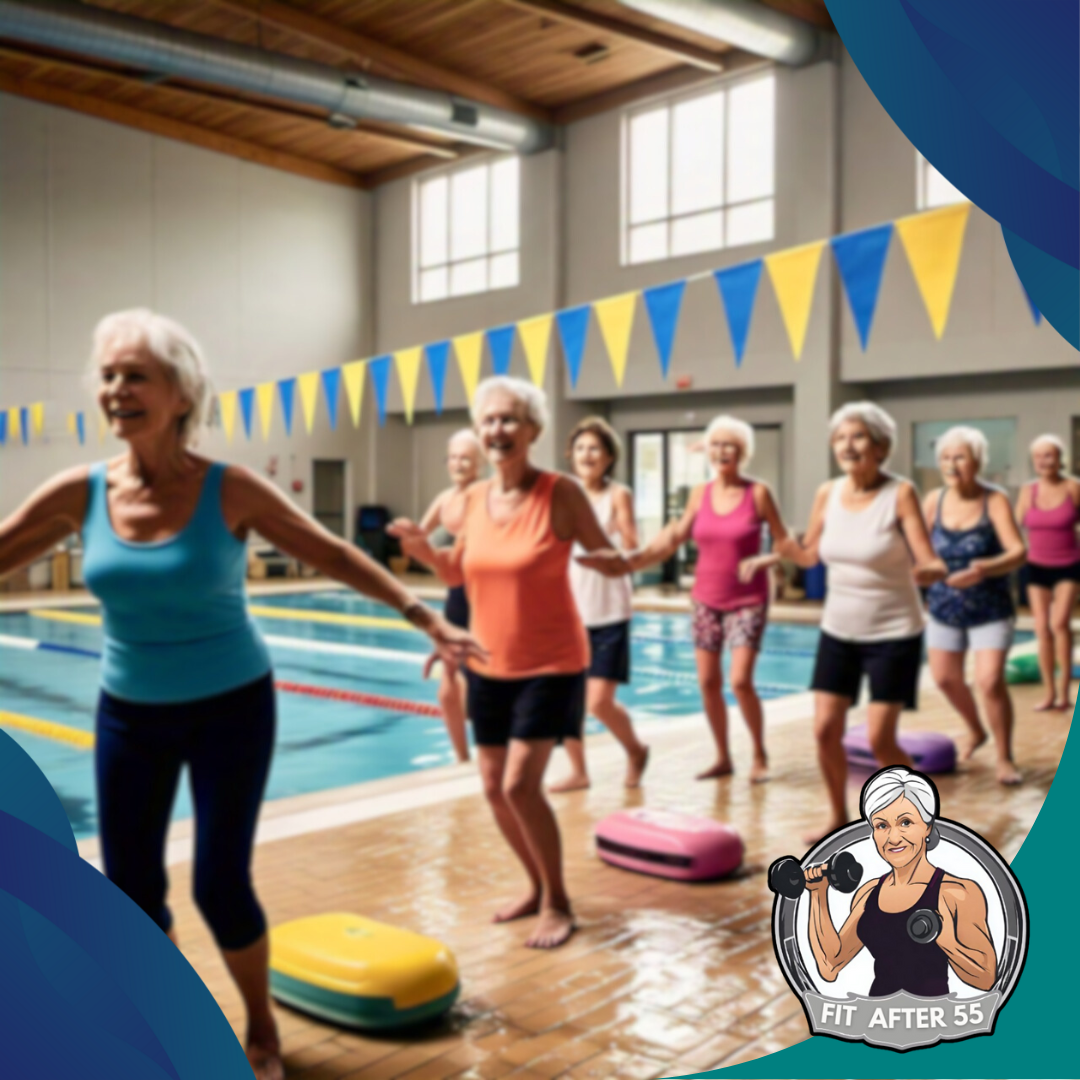
Low-Impact Cardio Options
There are plenty of ways to get your heart pumping without high-impact exercises. The following table outlines some low-impact cardio activities that can easily be incorporated into your daily routine.
| Activity Type | Description | Additional Notes |
|---|---|---|
| Brisk Walking | Walking at a moderate pace for 20 minutes every other day. | Great for heart health without the intensity. |
| Cycling | Biking at a comfortable pace. | Can be done outdoors or on a stationary bike. |
| Playing with Pets | Engage in active play with your dog or other pets. | Fun and social way to get moving. |
| Water Aerobics | Gentle on joints and fun with a social element. | Great for those with joint concerns. |
| Community Classes | Join local fitness or activity classes like dance or yoga. | Helps with motivation and building connections. |
| Everyday Activities | Incorporate cardio into daily tasks like gardening or cleaning. | Keep it fun with peppy music for extra energy. |
| Stair Climbing | Opt for stairs instead of elevators for a quick cardio boost. | A simple, no-equipment option to boost heart rate. |
| Activity Tracking | Use a step counter or pedometer app to track daily movement. | Seeing progress can motivate further activity. |
Consistency is key. Aim to integrate some form of cardio a few times a week. You’ll not only feel physically better but might notice a keener mind and a more cheery outlook on life.
Flexibility and Balance Exercises: Preventing Falls
As we age, keeping balance and flexibility in check is like having insurance for your body. Preventing falls becomes a top priority when agility isn’t what it used to be, but the good news is, there are exercises that can help.
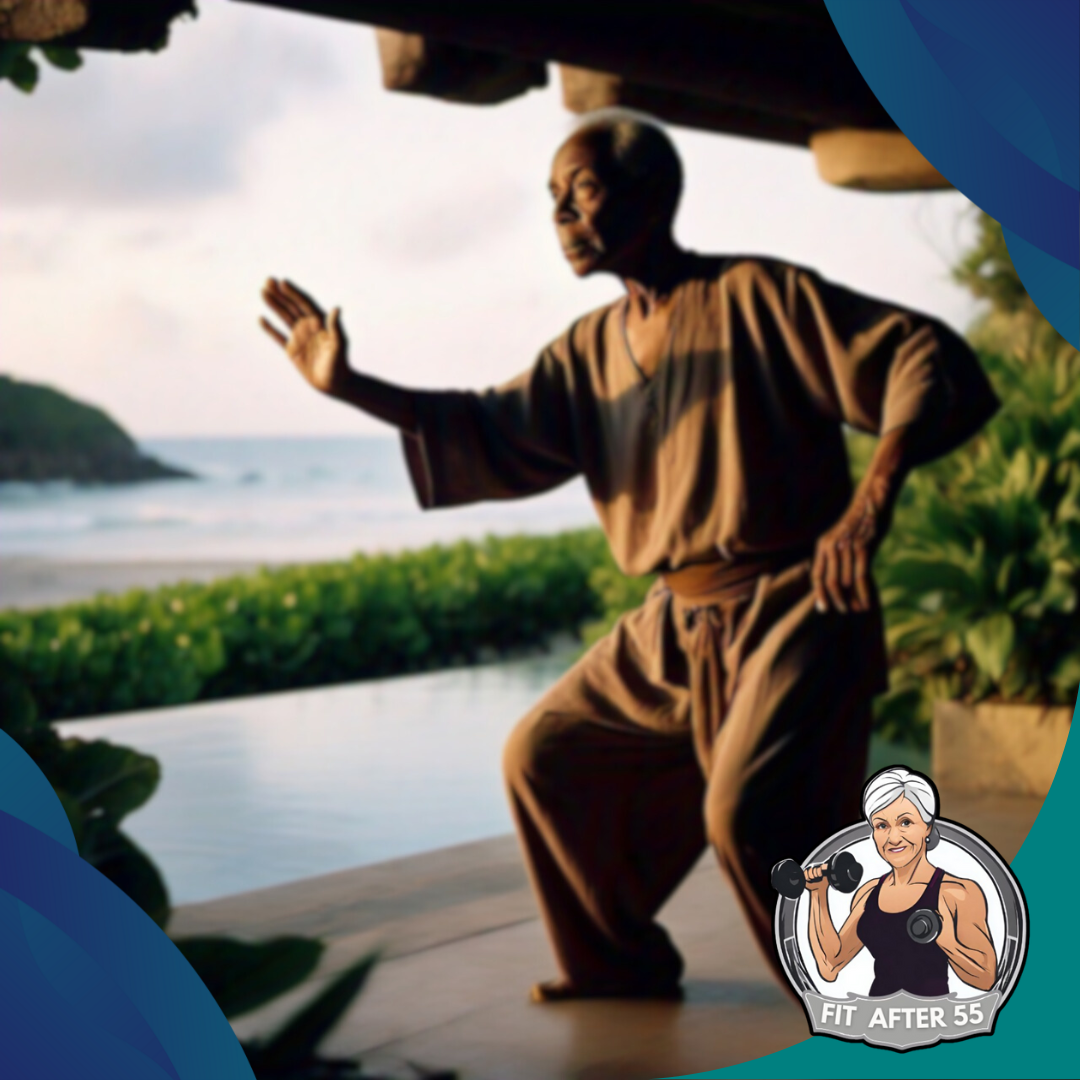
Stay consistent, and with time, those little leaps in flexibility and balance will add up to large strides in daily life enjoyment.
Mindfulness and Relaxation: Enhancing Mental Well-being
Taking care of the mind is as essential as caring for the body, especially in our seasoned years. Mindfulness and relaxation practices do wonders for mental health, and they’re easier to incorporate than you might think.
Finding time for meditation, even just a few minutes a day, can clear the mental clutter. Focus by closing your eyes, taking deep breaths, and feeling them fill and leave your body can ground your thoughts and bring a sense of calm. It’s an ideal way to start or end your day.

Breathing exercises are underrated superheroes in stress reduction. Breathing deeply and slowly can almost instantly reduce stress and anxiety levels. Techniques like box breathing or the 4-7-8 method are simple and effective to use anytime and anywhere.
Let’s not forget the power of relaxing hobbies. Picking up activities like gentle gardening, knitting, or even watercolor painting allows for a meditative state without the need for a formal practice. They engage the mind and body harmoniously and bring satisfaction.
Mindfulness isn’t about banishing stress entirely—it’s about managing it gracefully. The more you practice, the more benefits you’ll reap like better sleep, improved mood, and increased focus. The journey to mental tranquility is personal, and finding what resonates with you is part of the joy.
Integrating small doses of mindfulness into daily routines helps maintain a peaceful mind. Whether beginning the day with a peaceful reflection or winding down with a relaxing routine, these practices can transform your mental wellness over time.
Nutrition and Hydration: Fuelling the Body
Nutrition for Energy and Movement
What you consume plays a massive role in how you feel and move, especially as years roll by. Eating well is vital for maintaining energy and supporting your body’s needs when exercise becomes a regular part of life.
Start by focusing on nutrient-rich foods. Fresh fruits and veggies should be daily companions. They’re packed with vitamins and antioxidants that help the body fight off everyday stress and illnesses.
Proteins aren’t just for bodybuilders. They’re essential for muscle repair and growth. Think lean meats, fish, or plant-based sources like beans and lentils. Pair these with whole grains such as brown rice or whole wheat bread to keep your body fueled.
Hydration, Meal Planning, and Healthy Habits
Then there’s hydration. Let’s not overlook the simple power of good old H2O. Staying hydrated helps with everything, from digestion to maintaining optimal energy levels. Drinking water consistently throughout the day is a no-brainer, but don’t forget hydrating foods like cucumber and watermelon.
Watch out for sneaky sugars and processed foods—they often come wrapped in very tempting packages but can leave your body feeling run down. Reading labels and being mindful of nutritional content becomes all the more important.
Meals don’t need to be gourmet feasts. Simple, balanced meals are the way to go. Think grilled chicken with steamed veggies or a hearty vegetable soup. These are not just comforting, but also incredibly nourishing.
By taking the time to prepare and enjoy meals, you foster a healthy relationship with food. This not only fuels your workouts effectively but also enhances overall well-being, helping you meet your fitness goals with ease.
Building a Support System: Staying Motivated and Engaged
It’s tough to stay motivated on your own, but guess what? You don’t have to. Creating a support system is like having your very own cheerleading squad, always ready to boost morale when motivation dips.
Think about joining senior fitness clubs or groups. They’re not just about exercise, they’re about finding like-minded souls who understand the journey and challenges. Whether it’s a walking group or a yoga class, these communities can turn workouts into social events, making fitness fun.
Finding a workout buddy can be a game changer. Whether a friend or a family member, having someone to share the fitness path with keeps things interesting and fun. There’s always that friendly reminder to keep you on track, even on the days you’d rather not.
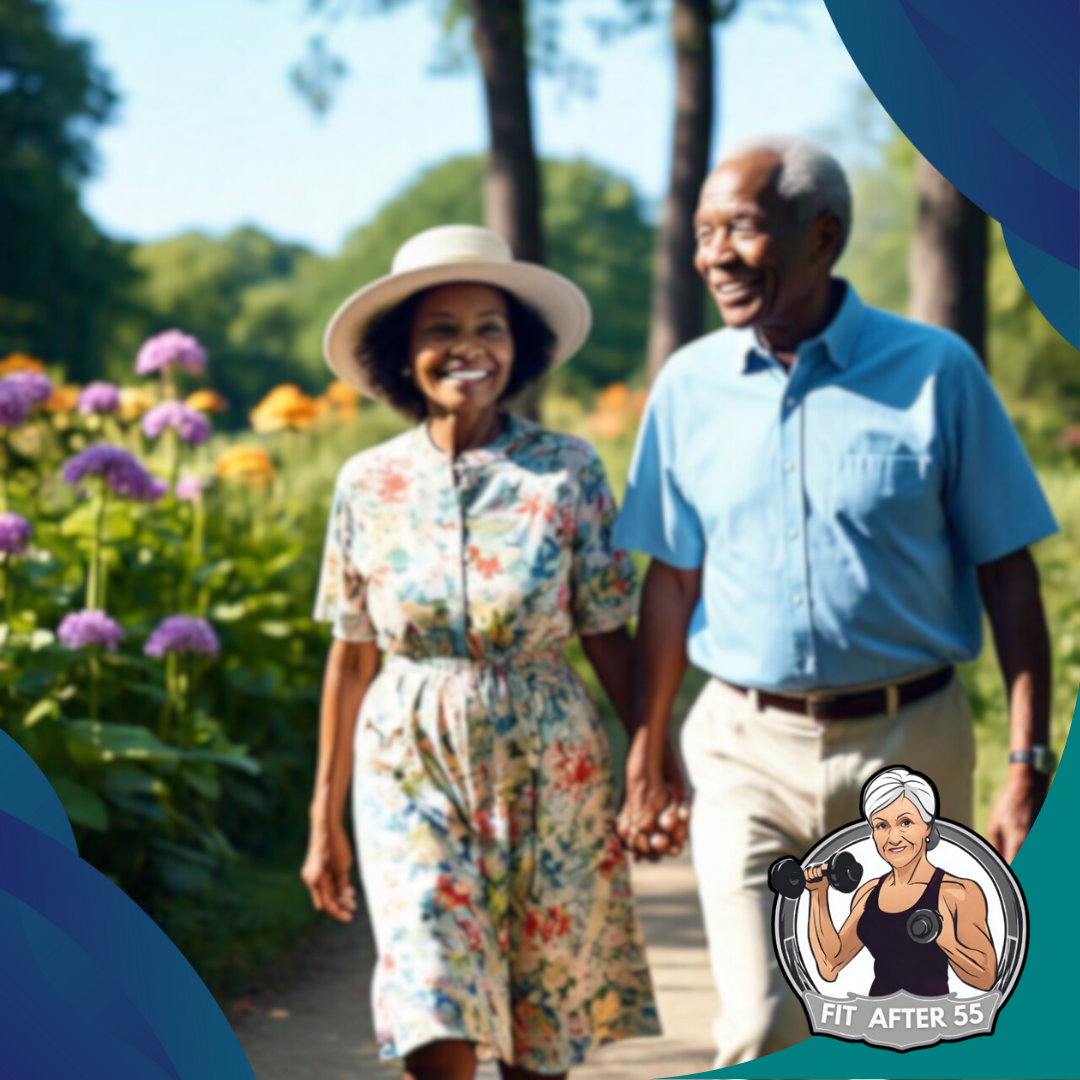
Look out for local events or community centers hosting fitness classes or workshops. These places often offer classes geared specifically for seniors, focusing on both ability and interest. Plus, they add a layer of social interaction that keeps things lively.
Technology can also lend a hand here, connecting you with online fitness communities or virtual classes. It’s a neat way to keep up with an exercise program from home while still being part of a wider network.
Staying engaged goes beyond just finding companions; it’s about building an entire mindset. Celebrate milestones together, share tips and stories, and most importantly, have a laugh along the way.
Over 55 Fitness Routines: A Journey of Health and Vitality
As a senior, I prioritize my health and well-being just like so many others do, and I’ve come to realize that staying active isn’t just about exercise—it’s about a lifestyle. From strength training to cardio, flexibility exercises, and mindfulness, the benefits of fitness in our golden years are endless. Whether it’s small, achievable goals or finding the right community support, it’s all about taking those steps toward a healthier, more vibrant life.
Remember, it’s never too late to start—every little bit helps. Thank you for taking the time to read through this article. I hope it’s inspired you to consider your own fitness journey. Stay active, stay motivated, and most importantly, enjoy the process. Here’s to your health and happiness—let’s keep moving forward!
Frequently Asked Questions
If you’re just getting started with fitness or looking to maintain your health over 55, you may have some questions. Below are answers to some of the most common inquiries that might help guide you on your journey to better health and well-being.
Why is fitness important for people over 55?
Fitness is crucial at any age, but especially over 55, as it helps maintain strength, improve heart health, boost mood, and prevent chronic conditions. Regular exercise keeps you independent, reduces health risks, and enhances your overall quality of life.
What type of exercises are best for people over 55?
Focus on low-impact activities that promote cardiovascular health, muscle strength, flexibility, and balance. Some great options include brisk walking, cycling, water aerobics, resistance band exercises, and balance training like yoga or Tai Chi.
How do I know where to start with my fitness routine?
Begin by honestly assessing your current fitness level. Can you walk a block without feeling breathless or do basic stretches? Use this as a guide to set realistic, achievable goals, like walking for 20 minutes a few times a week, and gradually build from there.
How can strength training benefit me at my age?
Strength training helps maintain and even increase muscle mass and bone density, which is especially important as we age. It allows you to remain independent, carry out daily activities with ease, and reduce the risk of falls and fractures.
Do I need to lift heavy weights to build strength?
Not at all! Bodyweight exercises (like squats and push-ups), resistance bands, or even everyday objects (such as cans or bottles) can be used to build strength safely and effectively without the need for heavy weights.

